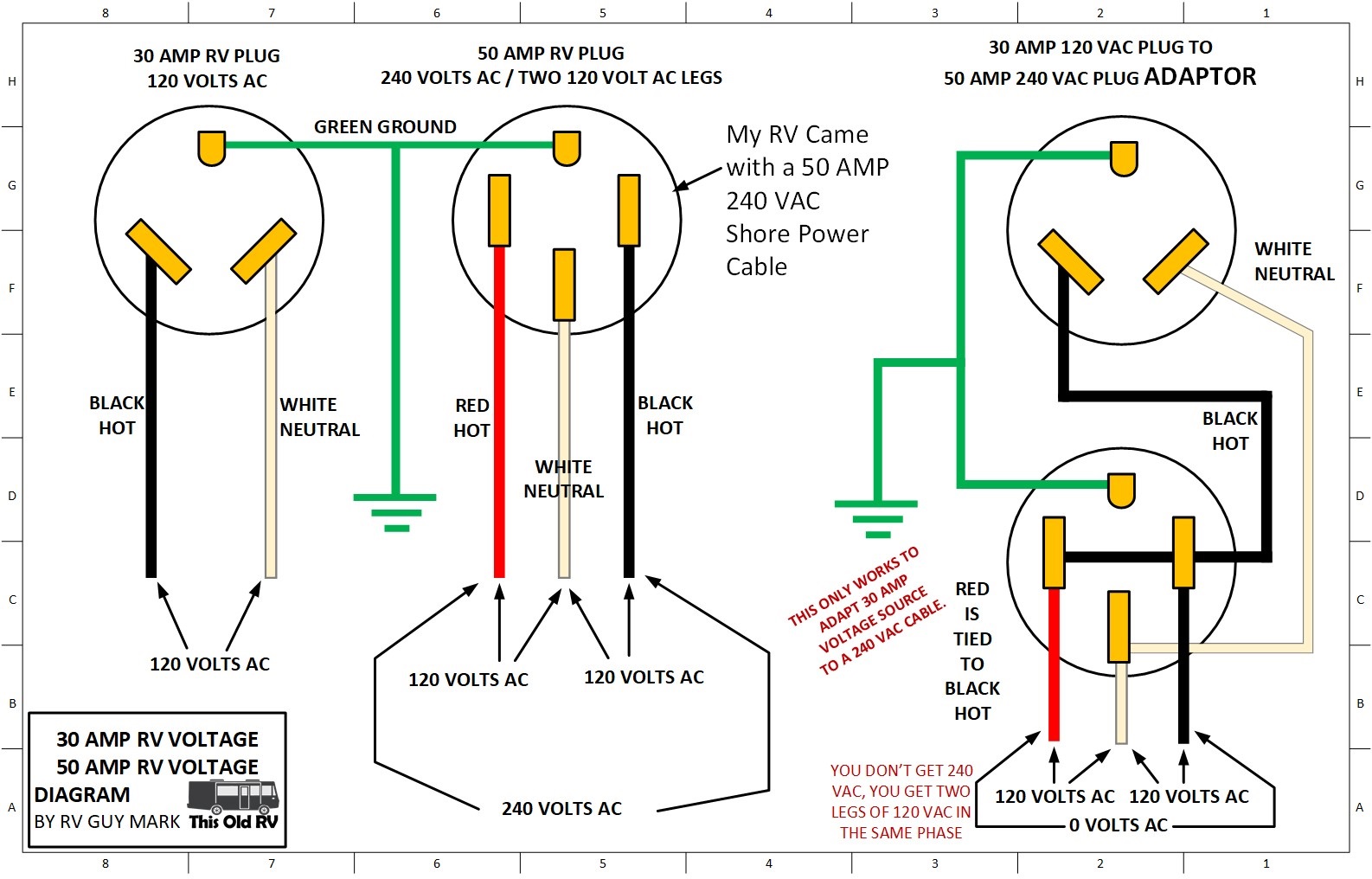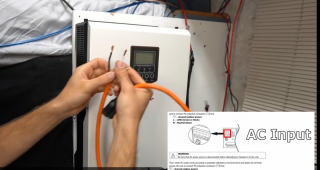Rednecktek
Solar Wizard
So close! Put a 150a breaker between the Class-T and the MPP so you can shut off your batteries if you need to work on things without having things energized.
So close! Put a 150a breaker between the Class-T and the MPP so you can shut off your batteries if you need to work on things without having things energized.
The AC input would go to an extension cord to plug into your generator or grid power.
The EG4's are about $1500 right now and I think are the best bang for the buck rackmount batteries out there. That's 5Kwh of battery of which you'll lose about half to inverter standby, but you'd have to compare the $1500 for a second battery VS the cost of all the Tier-1 parts that might save you half your standby draw or less.
So here's an idea. Since you're looking at the MPP units anyways, start out with a 3048 alone and a single rackmount battery or two. Have your electrician friend install a 30a AND a 50a plug into the side of the container and either have him do the jumper thing or just get the off-the-shelf adapter. Then, in the future get another 3048 and the communications cable and install it right next to the existing one to give you that 50a 240v socket. Move the plug and be done with it. If you find you need more than the 30a per leg that gives you, you can always add more 3048's in parallel to increase your power availability, but I doubt you're going to need to if you're a bit wise about your power usage.
A 30a plug has a hot, a neutral, and a ground which works for a 3Kw single out unit. A 50a plug has 2 hot lines, the neutral, and the ground which means you need a second unit to feed the second leg. When you get an RV you would usually end up buying an adapter, usually called a Dog Bone, that will adapt the 2 hot legs of the 50a plug into the single leg from the 30a plug to feed everything. Since they're different physical plugs you either have to use an adapter OR have one of each available.
The reason I suggested having the electrician throw both outlets in the box when they do all the wiring is so that the wires and outlet are already available when you do step up to dual units feeding a 50a plug rather than paying him to come out and run a 30a wiring setup then years later paying him again to re-run new wire for the 50a socket. By doing them both at the same time it's 1 extra man-hour of labor billed rather than the 4-hour minimum most jobs like that get billed for so it saves you money down the road and if the electrician is doing it all at once it's a lot easier on them to do it all rather than having to rip out and re-conduit or yank and re-pull different wire. One of those Cheaper-Now-Than-Later things that buys you expandability in the future.


See that black jumper on the 50a that goes straight across the two legs? When you step up to a 240v system that jumper would get removed and the RED wire would connect into the second unit's Line output. With a single inverter the line just feeds both legs and with 2 inverters each one feeds its own leg.
The idea behind installing both is that you can plug in whatever you want to the side of the container and it's really easy (read cheaper) for the electrician to do all the wiring at once than doing a second call out to rewire a second unit from scratch. The red wire to the second inverter would just get capped and set aside in the container for future use and not connected to anything.

A 30 amp rv cord can be 10 awg minimum, 1 hot, 1 neutral and 1 ground.No, you're going to have to buy wire based on the amperage load. You'll probably end up using 8AWG/16metric wire for 30a. Check the Bluesea chart I linked above for the sizing.
When your electrician goes to wire everything up they'll get the right wire in there.
It's going to gobble twice as much (2400Wh per day, or 1/2-ish of an EG4 battery) as a single 3048 since it's just two 3048's mounted in the same box, but it will feed that 50a plug right away and you should have plenty of power for anything you need short of a Bitcoin mining rig.
Plus with supporting 8Kw worth of panel right out the gate that's going to be able to get a lot of refilling action once the sun comes out.
One caveat of the 6048's over the 3048's is the generator backup. Because it's pre-configured for 240v split phase, if you hook up a generator to it for krappy weather recharging you need to have a 240v capable generator which usually start in the 6Kw range and are pretty gas hungry. The advantage of going with a pair of 3048's and configuring them yourself is that you can plug a regular generator into just one of the 3048's on 125v and recharge the entire battery bank. The other 3048 won't care. Just one of those things that can be a real "Gotcha!" issue.
Will ran into that when he did his view of the BigBattery and 5048 (predecessor to the 6048) and had to do some jumping to make it AC charge from a 120v source. He hits the snag about 5:25 in the video below.
They'll show 100% when the sun comes out and your solar array has had enough time to put in Battery Loss + Operating Watts back into the batteries. The 60w/hr or so the inverter needs will come from the panels once they get some happy sunlight. If your panels generate 3000w/h of power then that's 2940w going in to fill the batteries AND the 60w the unit needs to operate. Yes it uses battery capacity but the goal is to put more solar into the system during daylight hours than you can use and have those batteries fully topped up by the time dusk hits and they start petering out. If you generate 12000 watt hours during a sunny day but only USE 10000 watt hours worth of juice in a 24hr period then your batteries will probably be fully filled every day and good to go.

That definitely won't hurt as long as you can live without the 120v for the night.During those first few days that I'm trying to fully charge my batteries, should I turn off the 3048 when the sun goes down? Hopefully once I have the system dialed in, I'll have enough extra power that I can just leave it on.
You'll just have to put them in series of 2 to get the voltage high enough but that's OK. Your MPP unit doesn't want more than about 120v of DC input and those panels are nearly 50v each so 2 in series per string and however many strings of those you can fit.I found some 400 watt panels nearby for 300 each...I noticed the max power voltage is less than 48v, those would still work with my 3048 right?
That definitely won't hurt as long as you can live without the 120v for the night.
You'll just have to put them in series of 2 to get the voltage high enough but that's OK. Your MPP unit doesn't want more than about 120v of DC input and those panels are nearly 50v each so 2 in series per string and however many strings of those you can fit.
If you went with the EG4 version those like VoC up to about 500v but require 120v minimum so strings of 3-8 panels to feed. That's one of the advantages of the newer EG4 units is being able to take that higher string voltage range so you're not relying on getting stacks of small strings into combiner boxes. In your case, going on top of a Conex box, those panels are a little over 3ft wide right? You could put 8 panels up there and still have working space and just plug the two ends into the inverter.
MPP has been a very tried and true brand for a lot of folks, but it's got some serious limitations compared to some of the newer options out there.


